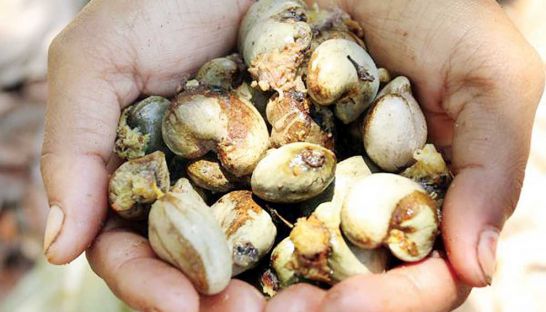Cambodia: Project to connect buyers to local produce suppliers
USAID Cambodia officially launched its Feed the Future Cambodia Harvest II project yesterday, a five-year initiative that aims to promote commercial horticulture in four Cambodian provinces and help smallholder farmers gain access to markets, reducing the country’s high dependence on imported fruits and vegetables.
The $17 million US-government funded project will use a buyer-led approach to identify potential commercial opportunities in its four selected provinces – Battambang, Pursat, Siem Reap and Kampong Thom – and work with local farmers in these provinces to create value chains for their produce.
A USAID team has been laying the groundwork for the project since April and has identified several horticultural products deemed suitable for commercial development and in demand, including cashew nuts, leaf vegetables, fruits and spices such as ginger.
Alexis Ellicott, USAID’s chief of party for the Harvest II project, explained that the project team first meets buyers to understand their demands then heads to the provinces to identify suppliers with the potential to meet these demands.
“We are working with buyers and trying to facilitate commercial partnerships [with suppliers] in order to increase sales . . . [and] we have a few tools to foster trust and make relationships sustainable,” she said, adding that the project is targeting $37 million in sales and $12 million in investment during its five-year term.
Chan Phaloeun, deputy director-general of the Agriculture Department at the Ministry of Agriculture, said commercial horticulture has struggled to take root in Cambodia, which as a result imports about 40 percent of its fruits and vegetables at a cost of around $200 million a year.
“We are trying to find solutions for farmers as local farmers face a lot of challenges in production, distribution and access to market,” she said.
Chan Sophal, director of the Centre for Policy Studies, said one of the main problems in developing a horticulture industry is that supply chains are fragmented and irregular.
“The challenge is that our horticultural producers cannot supply consistently or face a shortage of buyers,” he said, adding that the Harvest II project should help farmers to supply the market’s daily needs.
The Harvest II project is one of several initiatives aimed at developing commercial horticulture in rural Cambodia. Last month, New Zealand offered to provide a $6.5 million grant for a five-year commercial horticulture project aimed at helping smallholder organic fruit and vegetable farmers find local buyers for their products.
In May, the government and International Fund for Agricultural Development (IFAD) launched a six-year joint project with $36 million to develop agricultural value chains and assist smallholder farmers in gaining access to markets.
Meng Sakphouseth, IFAD country programme officer, said the recently launched projects differ in focus but share similar goals in that they all aim to develop a local horticulture industry.
“We will coordinate,” he said. “One project is focused on markets and we are focused on the production level, so [together] they will strengthen opportunities for farmers to access markets.”
USAID’s Ellicott said despite high competition in terms of production costs, Cambodian farmers have a homefield advantage over the producers of imported fruits and vegetables, whose products may contain high levels of pesticides.
“The consumer is willing to pay a bit more [for local fruits and vegetables than] imported products if they feel they are safer [to eat] and produced by Cambodian farmers,” she said.
Source: http://www.phnompenhpost.com/business/project-connect-buyers-local-produce-suppliers


 Thailand
Thailand




